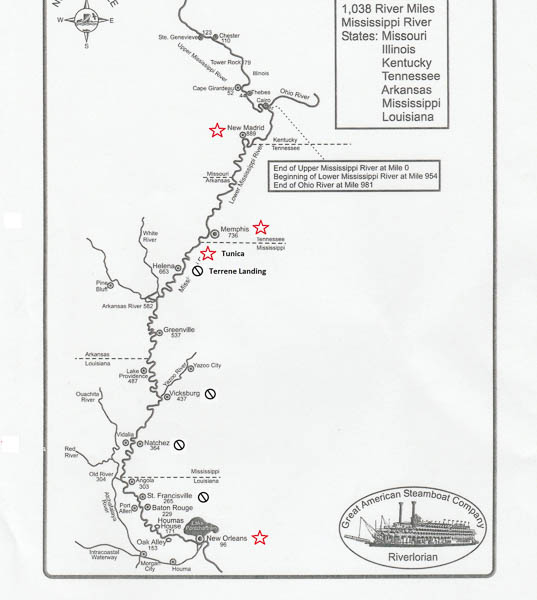 After passing Cairo, Illinois, and the confluence with the Ohio, we were
on the Lower Mississippi.
After passing Cairo, Illinois, and the confluence with the Ohio, we were
on the Lower Mississippi.
The following has been adapted from https://www.britannica.com/place/Mississippi-River:
To geographers, the lower Mississippi has long been a classic example of a meandering alluvial river; that is, the channel loops and curls extravagantly along its floodplain, leaving behind meander scars, cutoffs, oxbow lakes, and swampy backwaters. More poetically, Twain compared its shape to “a long, pliant apple-paring.” Today the sunlight glittering on the twisted ribbon of water remains one of the most distinctive landmarks of a transcontinental flight. Now curbed largely by an elaborate system of levees, control structures, and spillways, this lower section of the Mississippi was the golden, sometimes treacherous, highway for the renowned Mississippi steamboats, those “palaces on paddle wheels” that so fired the public imagination.
The red stars on the map show our successful stops. The black circles show the stops that got away.
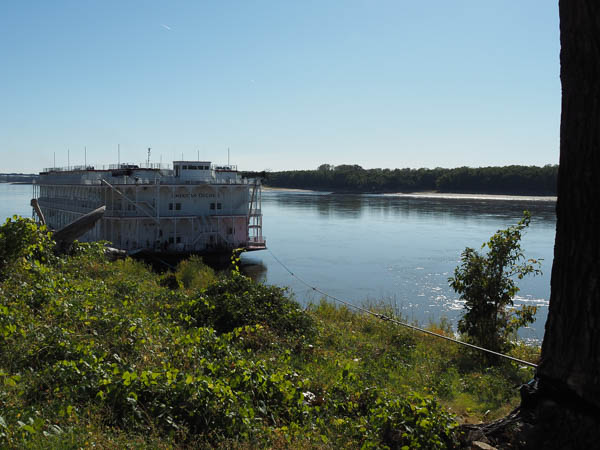
At Memphis, TN, we were supposed to dock at the Beale Street Wharf downtown, but it lacked sufficient water. So we tied up to trees at the Upper Mud Island boat ramp, more than a mile north of downtown.
At least one of the trees was heavily scarred from mooring ropes, so I was glad to see that our staff had padded the trees for protection.
The first two orders of our day were to visit the Bass Pro Shop in the over-the-top Memphis Pyramid to find a hat for Jim, who neglected to bring one, and to watch the ducks at the Peabody Hotel. See the detailed pages for more on this.
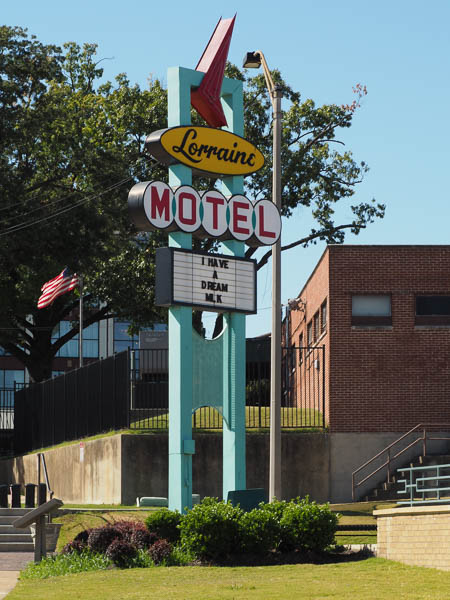
I made an afternoon visit to the site of Dr. Martin Luther King, Jr.'s, assassination even though the associated museum is closed on Tuesday.
There were enough interpretive signs to make sense of what happened that horrible day.
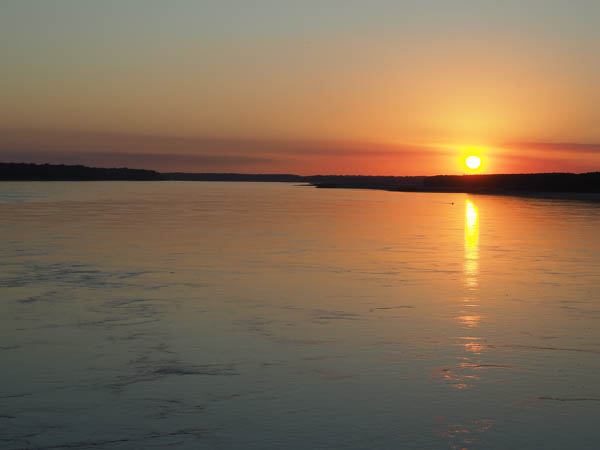
The following day continued our diversions due to low water.
We had planned to cruise to Terrene Landing outside of Rosedale, MS. Jim and I had signed up for a special excursion to B.B.King's home & burial site in Indianola in addition to the standard Road Scholar plan. As it happened, the shallow water prevented our landing there and we diverted to Tunica, MS. Bye-bye excursion.
Of the limited attractions that Tunica had to offer, one was closed. Most of the day was spent on the boat or at the nearby museum. We enjoyed the relaxing time and this lovely sunset from our balcony. Free of constant traffic, the water shows virtually no ripples.
As we went to bed, we had no idea where we would awake the next morning due to ongoing river closures by the Coast Guard.
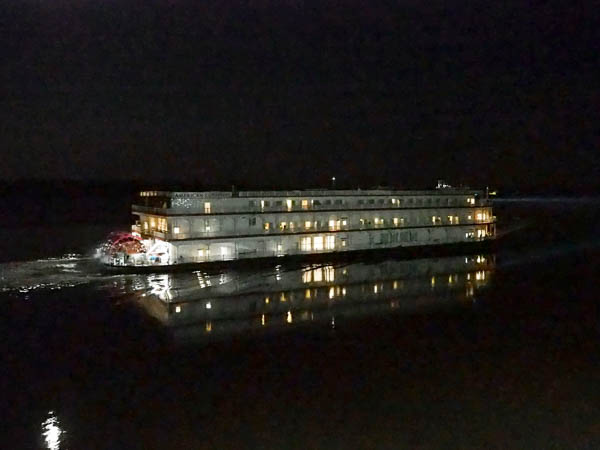
We awoke the next morning in ... Tunica!
The river remained closed. Our ship's crew said they did the best they could to convince the Coast Guard that our flat-bottomed, shallow-draft craft could run the bars in the shallow river, but the Coast Guard didn't bite.
After spending most of the day hoping for a miracle, the boat was underway again -- upriver. Our destination was New Madrid, Missouri.
Mutiny threatened.
Never mind, I had wanted to see New Madrid anyway on account of the huge 1811-1812 earthquakes. When we had passed New Madrid (that's pronounced New MAD-rid, by the way) going downriver, I had run up to the deck to get a picture. From the river, you only see the levee and some roofs.
The high point of this cruising day was passing our sister ship American Countess after dark. Horns blew. Passengers on both ships cheered. I hope they weren't expecting to reach New Orleans.
The following day the American Duchess churned upriver at top speed with occasional lay-bys to allow downriver barge traffic to pass. Downriver traffic has the right-of-way, and we wouldn't want to interfere with tows three times our size anyway!
We wondered where the tows were going since the river was closed, but Jim discovered that they were being chased out of Memphis to make space for other tows that were running out of fuel and other supplies. They would find somewhere to tie up and wait.
This low water is an inconvenience for us and a disaster of global proportions for those who need the grain idling next to Mississippi sandbars with nowhere to go.
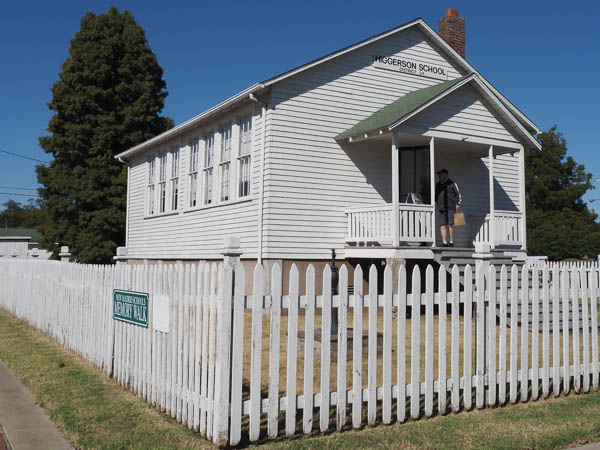
A number of the mutineers had prevailed on the boat crew to arrange bus transportation from New Madrid to Memphis for flights home. When we made it to breakfast, we found that the buffet had been stripped by the deserters, but the staff soon replenished supplies.
New Madrid is the southern end of the Birds Point-New Madrid floodway, one of the river control projects designed to protect Cairo, IL, from devastating floods.
This little schoolhouse started life in the former settlement of Higgerson Landing, east of New Madrid, MO. The school remained in operation into the 1960s when enrollment dropped below the minimum of 15 students.
The building was rescued in a ruinous state, removed to New Madrid, and restored to its 1940s glory.
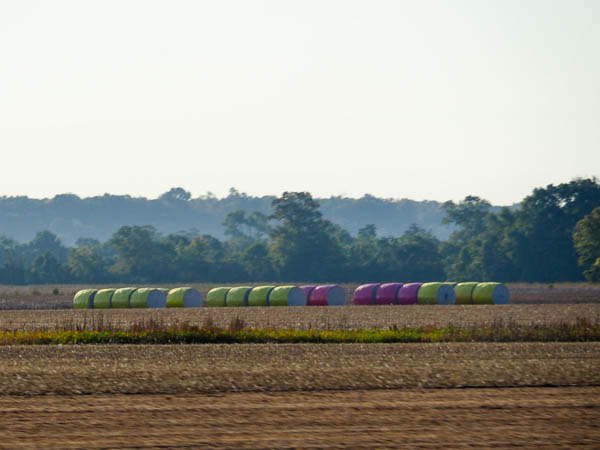
We had pondered going directly home from Memphis after the New Madrid stop, but there were no convenient airline options, so we decided to go with the group on the bus to New Orleans.
There wasn't much of interest along the way, except these new-fangled cotton bales that I snapped from the bus.
On the previous day our guide had discussed the various products of the Missouri "boot heel:" cotton, corn, soybeans, and milo (sorghum). A recent change in harvesting cotton is the development of picker/balers. Instead of being hand gathered in great sacks, or collected by mechanical harvesters and blown into large cotton trailers, or even packed into large square bales, cotton is now picked and packed into round bales to be taken to the gin.
We debated whether the color of the wrapping had any significance. It turns out that yellow was the original color, but pink was introduced to support breast cancer awareness. A portion of the sales funds research. There is also a less expensive blue wrap suitable for some applications.
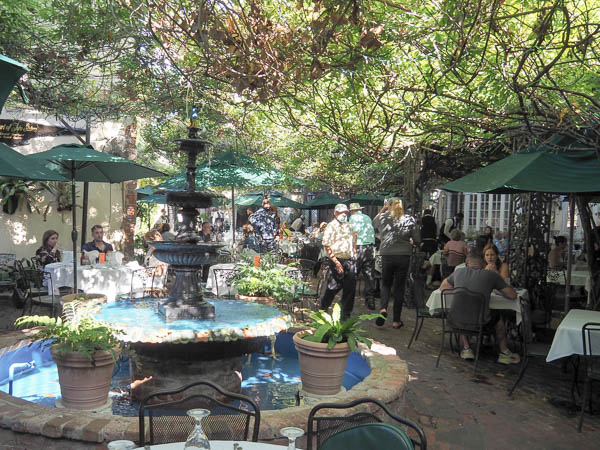
We were supposed to have two full days in New Orleans, but the Mississippi didn't cooperate. Nevertheless, the one day was jam-packed.
It started with a jazz brunch in the Court of the Two Sisters, or as Jim always calls it, the place of the several siblings.
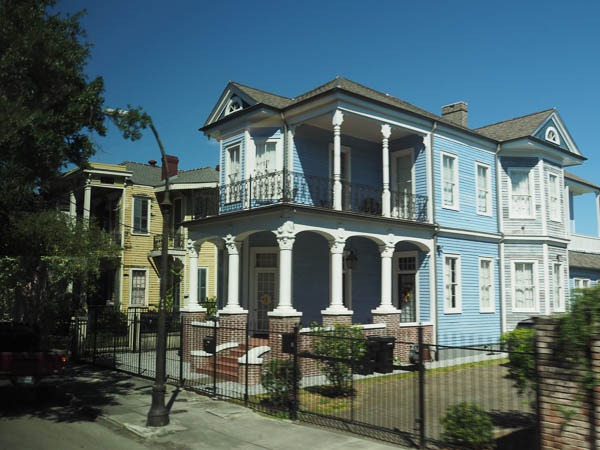
We then enjoyed a whirlwind bus tour of the city with emphasis on the 9th Ward, slowly recovering from Katrina, the historic Treme neighborhood, and the New Orleans City Park.
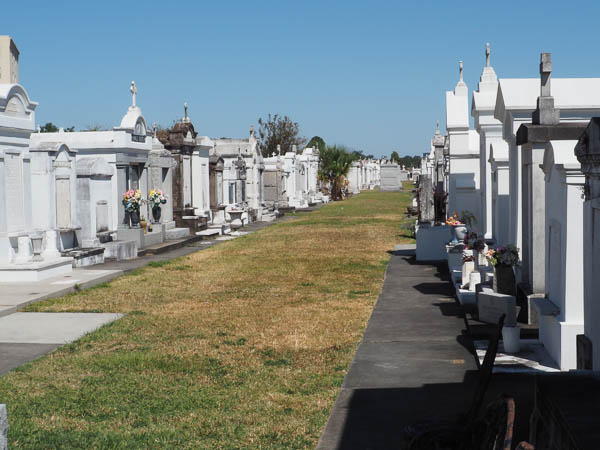
Of course we had to visit one of the iconic New Orleans cemeteries, St. Louis #3. All burials are above-ground in this below-sea-level city.
Jazz lunch was at the French Market Cafe.
After a brief time off, we gathered again for a cooking class at the New Orleans School of Cooking.
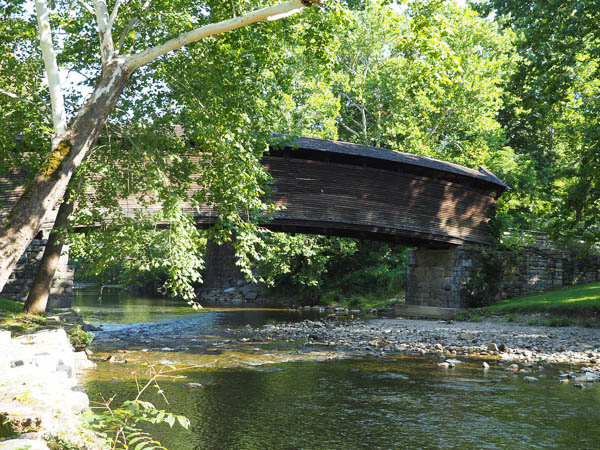
I always end our vacation travelogues with a picture from home to show that it doesn't get any better than Virginia.
Shortly before we went on our holiday, we had sold our house in preparation for moving into a local retirement community. For the weekend (!) it was on the market, we spent a good bit of time visiting local attractions with our little dog Koko.
The humpback bridge is a scenic destination in Allegheny County just west of Lexington. This excursion had the added attraction of fulfilling a dream of driving over North Mountain on the historic Lexington-Covington Turnpike, first surveyed in 1830. The road is now gravel and rugged, but the Subaru was up to the challenge. We were thankful not to encounter opposing traffic!
Click your "back" button to return to the previous page or click for our picture album.